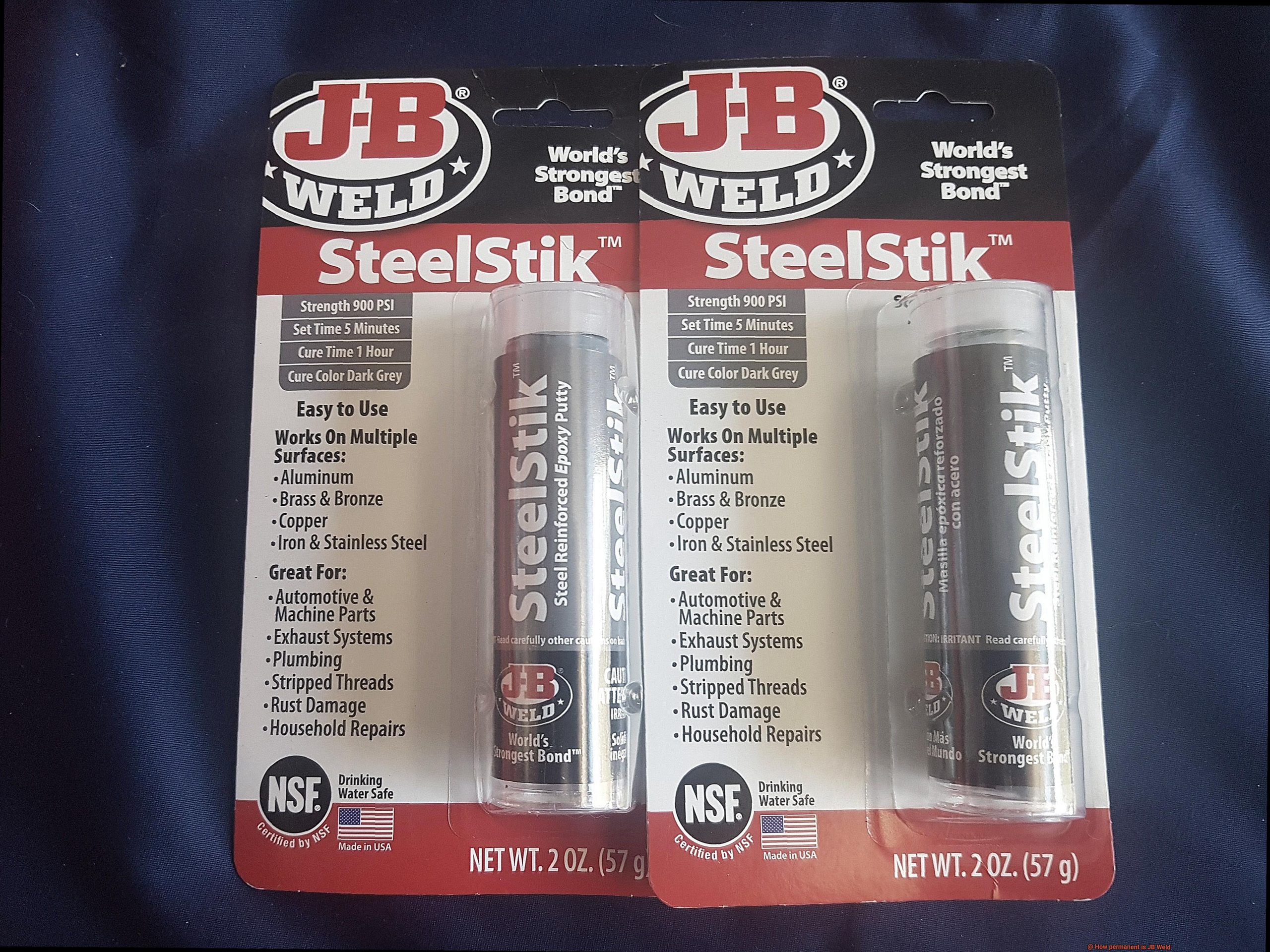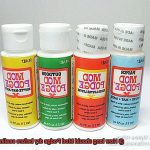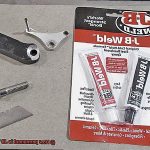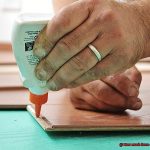Today, we’re embarking on a thrilling adventure into the captivating realm of adhesives. Our mission? To uncover the mind-boggling strength of Krazy Glue when it comes to taming the wild beast known as plastic. Whether you’re rescuing a shattered toy, fixing a beloved plastic gadget, or simply satisfying your curiosity, it’s crucial to understand just how formidable this trusty adhesive can be.
Krazy Glue, the legendary instant adhesive that has earned its spot in every household, is renowned for its unparalleled power and versatility. But let’s focus on its special connection with plastic – an alliance that sets it apart from the rest. Prepare yourself for an enthralling journey as we delve into the captivating science behind this extraordinary bond. Together, we’ll unravel the mysteries and shed light on why Krazy Glue effortlessly clings to plastic surfaces with jaw-dropping tenacity.
So grab your magnifying glass and brace yourself for a closer inspection of Krazy Glue’s indomitable grip on plastic. We’re here to spill all the adhesive secrets and expose the truth about just how unyielding this partnership can be. Get ready to have your mind blown by the unbreakable bond forged by Krazy Glue, defying all odds in the mesmerizing world of adhesive wonders.
Are you prepared for this epic quest? Then join us as we embark on an odyssey through strength and resilience, where Krazy Glue reigns supreme as the knight in shining armor for all things plastic-related. Let’s dive headfirst into this enchanting exploration and discover firsthand why Krazy Glue is truly a force to be reckoned with when it comes to bonding with plastic.
Preparing the Plastic Surface for Bonding
Contents
- 1 Preparing the Plastic Surface for Bonding
- 2 Applying Krazy Glue to Plastic
- 3 Curing Krazy Glue for Maximum Strength
- 4 How Strong Is Krazy Glue on Plastic?
- 5 Factors Affecting the Strength of Krazy Glue Bonds on Plastic
- 6 Tips for Enhancing Krazy Glue’s Bond Strength on Plastic
- 7 Alternatives to Krazy Glue for Bonding Plastic
- 8 Conclusion
When it comes to bonding plastic surfaces with Krazy Glue, proper preparation is the secret to ensuring a strong and durable bond. Follow these steps to effectively prepare the plastic surface, creating an optimal foundation for the adhesive to do its magic.
- Clean the surface: Before bonding, it is essential to give the plastic surface a thorough cleaning. Imagine wiping away the grime and dirt that could hinder the adhesive’s ability to form a secure bond. Use a mild detergent or rubbing alcohol to eliminate any contaminants, leaving the surface pristine and ready for bonding.
- Roughen the surface: Now, picture gently roughening the plastic, like creating a textured canvas for the adhesive to latch onto. Utilize sandpaper or a fine-grit abrasive pad, moving in circular motions to create tiny scratches that enhance the grip of the adhesive. Be careful not to overdo it; we’re aiming for just enough roughness, not a complete transformation.
- Clean again: Once you’ve created those tiny scratches on the surface, give it another cleaning. This step ensures that any debris from the sanding process is removed, making way for direct bonding between the adhesive and the plastic. With a clean surface, you’re paving the way for an unbreakable connection.
- Consider using a primer: Sometimes, smooth or non-porous plastics pose a challenge when it comes to bonding. That’s where primers come into play, acting as a bridge between difficult surfaces and adhesives. Imagine applying a specialized primer before applying Krazy Glue, strengthening that bond to new levels of durability. Just follow the primer product instructions for proper application techniques and drying times.
- Apply Krazy Glue sparingly: Picture yourself delicately applying Krazy Glue onto one of the surfaces you wish to bond. Remember, less is more in this case. A thin, even layer of adhesive is all you need. Going overboard might lead to weak bonds or an overflow of glue, which we definitely want to avoid.
- Press and hold: Once the adhesive is applied, imagine bringing the two surfaces together, like a gentle handshake between plastic and glue. Apply light pressure for a few seconds, encouraging maximum contact and promoting a stronger bond. It’s like urging them to become inseparable, but remember not to disturb or move the bonded pieces until the glue has fully cured.
- Allow time for curing: Take a moment to consider the type of plastic and the environmental conditions. These factors play a role in the curing process, which may take several hours for Krazy Glue to reach its maximum strength. Patience is key here. Follow the manufacturer’s instructions for specific curing times, and resist any urge to subject the bond to stress or strain during this period.
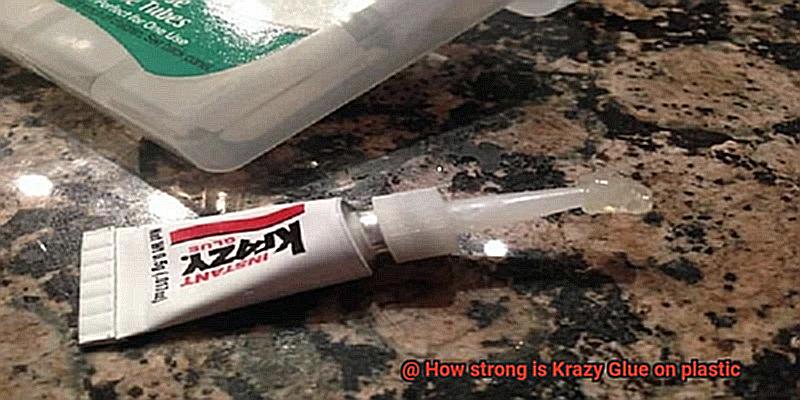
Remember, Krazy Glue may not be compatible with all plastics. Some plastics, such as polyethylene and polypropylene, have low surface energy and can be challenging to bond. In such cases, it is wise to seek out specialized adhesives designed for bonding these specific types of plastics.
Lastly, proper storage of Krazy Glue is crucial for maintaining its effectiveness and prolonging its shelf life. Picture storing it in a cool, dry place with the cap tightly sealed after each use, preserving its adhesive powers for future bonding adventures.
Applying Krazy Glue to Plastic
Look no further than the superhero of instant adhesives – Krazy Glue. In this comprehensive guide, we will delve into the art of applying Krazy Glue to plastic, unlocking the secrets to creating unbreakable bonds that can withstand the trials and tribulations of everyday life. So, fasten your seatbelts, don your cape, and let’s dive headfirst into the world of adhesive sorcery.
Step 1: Cleanliness is Key: Preparing the Perfect Canvas
Before diving into the gluing process, it is crucial to ensure that your plastic surfaces are pristine. Like a painter preparing a canvas, cleanliness is key. Any dirt, oils, or residue can hinder the bonding process and weaken the strength of your bond. Take a moment to give your plastic pieces a gentle wipe-down with a mild detergent or rubbing alcohol, ensuring that they are dry and free from any impurities. This will provide you with the perfect canvas for your adhesive masterpiece.
Step 2: Less is More: The Magic of Precision
In the realm of Krazy Glue application, remember that less is more. Resist the temptation to create a towering glue glob that could rival Mount Everest. Instead, embrace the magic of precision. Apply a thin layer of Krazy Glue to one surface only. This ensures an even distribution of adhesive and prevents excess glue from interfering with the bond. Remember, a little bit of this mighty glue goes a long way.
Step 3: Press and Hold: Forging an Unyielding Bond
Now comes the exhilarating part – joining your plastic pieces together. Like a blacksmith forging steel in a blazing furnace, firmly press the surfaces together and hold them in place for a few minutes. This allows the Krazy Glue to set and work its magic, creating a bond that can withstand even the most epic battles. Exercise patience and let the adhesive weave its invisible web of strength.
Factors Affecting Bond Strength: Unleashing the Full Potential
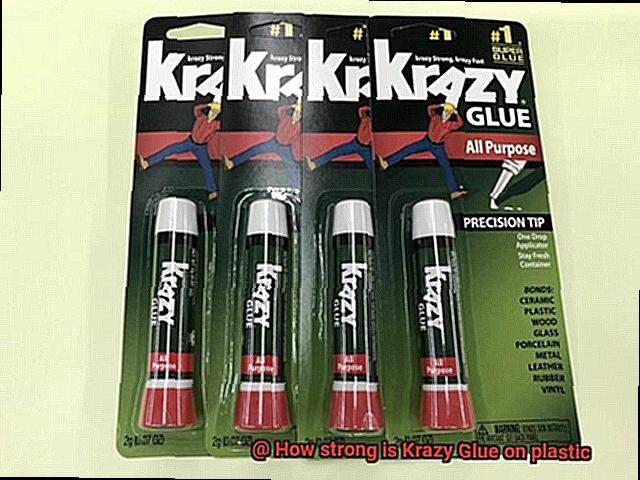
While Krazy Glue is renowned for its formidable strength on plastic, it is essential to consider certain factors that may affect the durability of your bond. Understanding these elements will empower you to unlock the full potential of your adhesive prowess.
- Type of Plastic: Different plastics possess varying surface energies, which can influence how well they bond with Krazy Glue. Some plastics may effortlessly form a bond, while others may require additional measures. Consider roughening the surface with sandpaper or utilizing a primer specifically designed for plastics to enhance the bond strength.
- Surface Texture: In the realm of adhesion, texture matters. A smooth plastic surface may not provide as much grip for the glue as a roughened or textured one. Enhance your bond strength by lightly sanding the plastic, allowing the Krazy Glue to seize every nook and cranny with tenacity.
- Pressure and Stress: The amount of pressure or stress applied to the bonded area can significantly impact the strength of your bond. While Krazy Glue possesses impressive holding power, avoid subjecting the freshly glued pieces to excessive force until the adhesive has fully cured. Grant your bond the time it needs to solidify its resilience.
Curing Krazy Glue for Maximum Strength
Welcome back, glue enthusiasts. Today, we embark on a journey to unlock the secrets of achieving maximum strength when bonding plastic surfaces with Krazy Glue. Just like a master artist preparing a canvas or a skilled blacksmith forging steel, creating unbreakable bonds requires a harmonious blend of artistry and scientific precision. So, fasten your safety goggles and prepare to dive into the world of Krazy Glue.
Step 1: Cleanliness is Key
Before even thinking about applying Krazy Glue, it’s crucial to ensure that your plastic surfaces are absolutely pristine. Dust, grease, or any pesky contaminants can hinder the bonding process, so take the time to meticulously clean the surface. A thorough wipe with a clean cloth and a splash of rubbing alcohol will do wonders.
Step 2: Apply with Surgical Precision
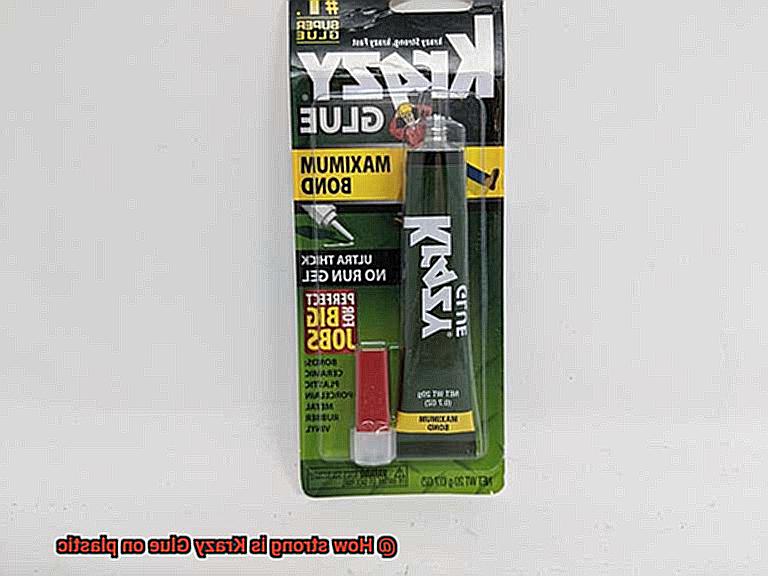
Now that your plastic surfaces are gleaming, it’s time to apply the Krazy Glue. Remember, less is more. Apply a thin, even layer of glue to one of the plastic surfaces. Fight the urge to go overboard – an excess of adhesive can result in improper curing and weaken the bond we strive for.
Step 3: Merging the Masterpieces
Once the glue is applied, delicately align and join the two plastic pieces together. Hold them firmly in place for several minutes, allowing the initial bond to take shape. This pivotal holding period lays the foundation for a robust and enduring connection.
Step 4: The Virtue of Patience
After this initial holding period, exercise restraint and patience. Let the glued plastic cure undisturbed for at least 24 hours before exposing it to any stress or load. During this curing period, maintain the glued parts in a stable position; avoid any unnecessary movement or flexing that could compromise the bond’s strength.
Step 5: Optimize the Environment
Temperature and humidity play a pivotal role in the curing time and bond strength of Krazy Glue. To achieve optimal results, adhere to the manufacturer’s recommendations regarding temperature and humidity conditions. Crafting the perfect environment for curing can make all the difference in unlocking maximum strength.
Step 6: Embrace the Extra Mile
For those seeking an extra dose of strength, consider employing additional techniques to enhance the bond. Applying gentle pressure or utilizing clamps can elevate the bond strength between Krazy Glue and plastic. Remember to exercise caution and follow safety guidelines when applying pressure.
It’s important to note that Krazy Glue may not bond well with certain types of plastics, such as polyethylene or polypropylene. In these cases, specialized adhesives designed specifically for plastic-to-plastic bonding may be a better alternative.
How Strong Is Krazy Glue on Plastic?
When it comes to gluing plastic, we all want that “hold your breath and hope for the best” kind of bond. You know, the kind that will withstand the test of time and keep our beloved items intact. That’s where Krazy Glue steps in, ready to save the day with its reputation for creating durable bonds.
But just how strong is Krazy Glue on plastic? Well, it turns out that the strength of the bond can vary depending on a few factors. First, you need to consider the type of plastic you are working with. Krazy Glue is compatible with a wide range of plastics, including ABS, acrylic, polycarbonate, and PVC. However, not all plastics are suitable for bonding with Krazy Glue. Polyethylene and polypropylene, for example, have low surface energy and are resistant to adhesion.
To ensure a strong bond, it’s important to prepare the surface before applying Krazy Glue. Cleanliness is key here – remove any dirt, grease, or contaminants that could interfere with the bonding process. And don’t forget to roughen the plastic surface slightly using sandpaper or a file. This creates more surface area for the glue to adhere to, maximizing its grip.
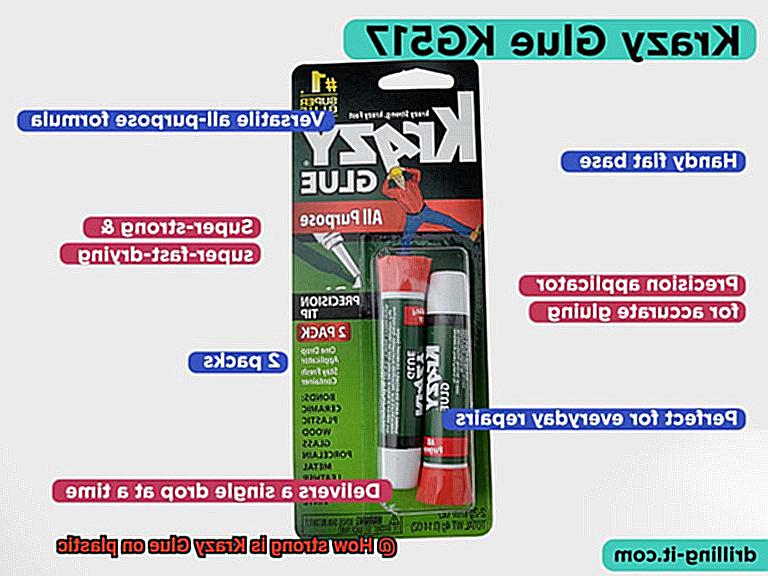
When applying Krazy Glue to plastic, remember that a little goes a long way. Excessive amounts can lead to messy application and weaken the bond. Instead, use a small amount and spread it evenly. Trust me, a thin layer is sufficient for most plastic bonding applications.
Now comes the crucial part – holding those bonded pieces firmly together for a few seconds. This initial contact time helps establish a strong bond between the glue and plastic. And here’s a pro tip: let the glued plastic cure for at least 24 hours before subjecting it to any stress or strain. This curing time allows the adhesive to fully harden and reach its maximum strength.
While Krazy Glue provides a strong bond on most plastics, it’s essential to consider the intended use of the bonded item. If the plastic will face heavy loads, constant flexing, or extreme temperatures, it may be wise to explore alternative adhesive options specifically formulated for those conditions.
Factors Affecting the Strength of Krazy Glue Bonds on Plastic
When it comes to creating bonds that can withstand the test of time, there are several factors that come into play. Let’s explore the key elements that affect the strength of Krazy Glue bonds on plastic.
- Surface Preparation: Just like a painter needs a clean canvas, you need a clean plastic surface for optimal bonding. The presence of oil, grease, or dust can create a barrier between the glue and the plastic, weakening the bond. So grab a cloth and some cleaning solution, and give that plastic a good scrub.
- Type of Plastic: Not all plastics are created equal when it comes to bonding. Some plastics, like polyethylene and polypropylene, have low surface energy and are notoriously difficult to bond. They require special treatment or primers to enhance adhesion. On the flip side, plastics like polycarbonate and acrylic have higher surface energy and tend to bond better with Krazy Glue.
- Temperature and Humidity: Like Goldilocks and her porridge, Krazy Glue works best at room temperature with moderate humidity levels. Extreme temperatures, whether too hot or too cold, can mess with the curing process of the glue and weaken the bond. And high humidity levels can prolong curing time, making you wait longer for that strong bond.
- Application Technique: Less is more when it comes to Krazy Glue. Apply a thin layer of glue evenly on both surfaces that need to be bonded. Too much glue can result in excess adhesive squeezing out when pressure is applied, compromising the bond. And speaking of pressure, make sure to apply sufficient pressure during bonding to ensure proper contact between the glued surfaces.
- Curing Time: Patience is a virtue when it comes to curing time. While some Krazy Glue variants offer fast curing times, it’s generally best to let the glue fully cure before subjecting the bond to stress or load. Curing times can range from a few minutes to several hours, so be sure to follow the instructions provided by the manufacturer.
- Environmental Factors: Mother Nature can also have an impact on the strength of your Krazy Glue bonds. Prolonged exposure to sunlight can degrade the glue over time, weakening the bond. And certain chemicals or solvents can react with the glue and compromise its adhesive properties. So keep your glued plastic items away from harsh UV rays and chemical spills.
Tips for Enhancing Krazy Glue’s Bond Strength on Plastic
Look no further. In this article, we will delve into the secrets of enhancing the bond strength of Krazy Glue on plastic. Whether you’re mending a broken toy or crafting a masterpiece, these expert tips and tricks will empower you to achieve an unbreakable bond. Let’s dive in and explore the world of adhesive magic.
The Power of Purity:
Prepare your plastic surface for bonding by ensuring it is squeaky clean. Rid it of any dirt, dust, or greasy residues that could hinder the adhesive process. Polish it with a clean cloth or mild detergent, creating a pristine canvas for Krazy Glue to work its magic. A pure surface sets the stage for a powerful bond.
Rough and Ready:
Unleash the true potential of Krazy Glue by roughening up the plastic surface. Gently sand it with fine-grit sandpaper or create intricate scratches with a scoring tool. This textured canvas provides countless tiny anchors, giving Krazy Glue a firm grip and creating an unyielding bond.
Primer: The Game-Changer:
Certain plastics, like polypropylene and polyethylene, pose a challenge due to their low surface energy. Fear not. Introduce a primer designed specifically for bonding plastics into the equation. This mediator between Krazy Glue and plastic transforms weak bonds into unbreakable connections. Watch in awe as your bond strength soars to new heights.
Less is More:
Embrace the mantra of minimalism when applying Krazy Glue to plastic surfaces. A thin, even layer of glue is all you need for an indomitable bond. Excessive glue can lead to unwanted squeeze-out, weakening the bond’s fortitude. Moreover, it can prolong the curing time and compromise overall strength. Remember, a little goes a long way.
Patience: The Virtue of Bonding:
Harness the power of patience when working with Krazy Glue. Allow ample curing time for the adhesive to work its magic. Consult the manufacturer’s instructions to determine the optimal duration. Resist the temptation to handle or stress the bond prematurely, as patience is key to achieving maximum strength. Leave your glued plastic undisturbed for at least 24 hours and witness the birth of an unbreakable union.
The Climate Connection:
Consider the environmental conditions when bonding with Krazy Glue. Optimal temperature and humidity play crucial roles in the bonding process. Aim for a controlled environment with room temperature around 70°F (21°C) and low humidity. Extremes in temperature or high humidity can disrupt the curing process, leaving you with a fragile bond. Work smart by working in optimal conditions.
Alternatives to Krazy Glue for Bonding Plastic
When it comes to bonding plastic, there are several alternatives to Krazy Glue that can provide a strong and durable bond. One popular option is epoxy resin, a two-part adhesive that consists of a resin and a hardener. When mixed together, epoxy resin forms a powerful bond known for its excellent adhesion to various materials, including plastic. Whether you’re working with ABS, PVC, or polycarbonate, epoxy resin will get the job done.
Another alternative is cyanoacrylate adhesive, also known as super glue. Similar to Krazy Glue, super glue is fast-drying and forms an instant bond when applied to surfaces. However, not all super glues are suitable for bonding plastic. Look for a super glue that specifically mentions its compatibility with plastic to ensure a successful bond.
For notoriously difficult-to-bond plastics like polypropylene and polyethylene, consider using poly cement. This specialized adhesive is designed specifically for these types of plastics and provides a strong and long-lasting bond.
If you prefer non-toxic and environmentally friendly options, bio-based adhesives are an excellent choice. Made from natural ingredients and free from harmful chemicals, these adhesives can be used for bonding various materials, including plastic.
In some cases, mechanical fasteners such as screws or bolts may be the best option for bonding plastic. Mechanical fasteners provide a secure and reliable connection between plastic parts, especially for larger or heavier components that require extra strength.
Before choosing an alternative adhesive, consider the specific requirements of your project. Factors such as the type of plastic, surface preparation, and intended use should be taken into account. It’s always a good idea to test any adhesive on a small, inconspicuous area of the plastic before applying it to the entire surface.
_vR15u0vmms” >
Also Read: Does Krazy Glue Work on Metal?
Conclusion
Krazy Glue is an adhesive powerhouse when it comes to bonding plastic.
Its strength is unparalleled, firmly joining plastic surfaces together with a tenacity that defies expectations. This mighty glue forms an unbreakable bond, creating a connection that withstands the test of time.
With its remarkable adhesive properties, Krazy Glue ensures that your plastic objects stay firmly intact, even in the face of daily wear and tear.

